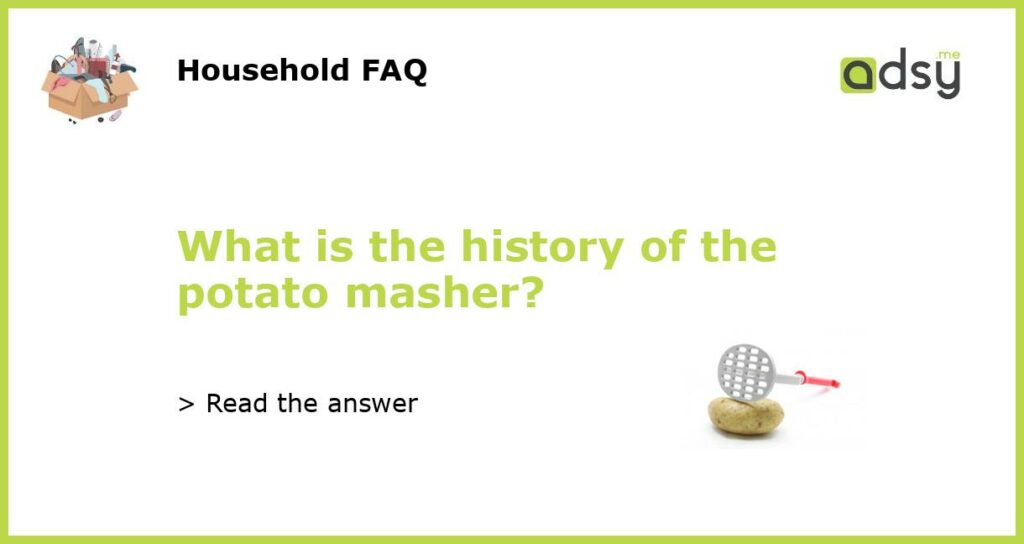The Origins of the Potato Masher
The potato masher is a kitchen utensil that has been around for centuries, primarily used for making mashed potatoes and other dishes that require mashing. The earliest versions of the potato masher were simple wooden tools that were used to mash potatoes by hand. In the 19th century, metal potato mashers became popular, and they are still widely used today.
The Evolution of the Potato Masher
The design of the potato masher has changed over time, with new materials and shapes being introduced to improve its effectiveness. The traditional wooden potato masher has largely been replaced by metal mashers, which are more durable and easier to clean. Some newer potato mashers are made from plastic or silicone, which are heat-resistant and can be used with non-stick cookware.
Modern Potato Mashers
Today, potato mashers come in a variety of shapes and sizes, with different features designed to improve their performance. Some mashers are designed to be more ergonomic, with soft-grip handles and angled heads that make it easier to mash potatoes. Others come with additional attachments, such as a ricer plate, which can be used to make finer mashed potatoes.
Uses Beyond the Potato
While the potato masher was originally designed for making mashed potatoes, it has since become a versatile tool that can be used for a variety of tasks in the kitchen. It can be used to mash other vegetables, such as carrots, turnips, and parsnips, and can also be used to crush nuts or crush tomatoes for sauce. As a result, the potato masher has become an essential tool for any home cook.
The potato masher has a long and storied history in the kitchen, and it is a testament to its usefulness that it has remained a popular tool for so many years. Whether you are making mashed potatoes, crushing nuts or tomatoes, or mashing other vegetables, the potato masher is a versatile and indispensable tool that every home cook should have in their kitchen.






